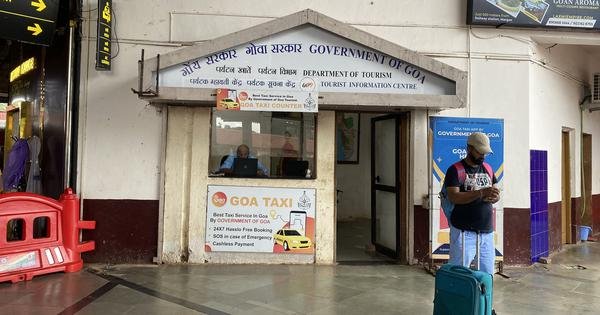Understanding India’s Urban Mobility Challenges
The Current Debate on Taxi Services
Goa’s new Transport Aggregator Guidelines have started fresh talks about taxi services. Tourists, locals, and drivers are all discussing prices and rules. In Bengaluru, bike taxi services stopped on June 16 due to a court order. App-based companies then called these services courier platforms, which many saw as a way to avoid rules.
Widespread Debate Across India
These events have caused big debates all over India. People are angry about “taxi mafias” and worried about job losses and legal issues. In Goa, critics point out high fares and bad service. In Bengaluru, the bike taxi ban has left many gig workers without jobs. Some defend Goa’s taxi system as a local cooperative, saying that fixed pricing and area control are forms of protection.
The Real Problem
The main issue is not just about Goa or Bengaluru. It’s about how urban mobility is managed all over India. Instead of debating whether to ban or welcome app-based services like Uber and Ola, we should ask why our cities haven’t built fair and inclusive mobility systems for everyone.

India’s Urban Transport System
India’s urban transport system depends a lot on “paratransit” – informal and flexible modes like autorickshaws and taxis. These services fill gaps in formal public transit and meet the mobility needs of most people. However, this system is often inefficient, poorly regulated, and fragmented. What some call cartelization or mafia-like behavior is often a sign of deeper policy failures.
Issues with Permits
In many cities, getting legal permits to operate is very hard. The number of permits is limited, and the system lacks transparency. These restrictions have led to grey markets and informal monopolies. For example, in Delhi, a 1997 court ruling linked autorickshaw permits to vehicle registrations and stopped new registrations. This created a scarce permit-vehicle asset, leading to an unclear permit system that is easily misused.
Impact of Aggregators
Aggregators like Uber and Ola initially avoided these restrictions by registering vehicles under tourist taxi categories. This allowed them to break taxi monopolies but also led to too many vehicles and falling driver incomes. While these apps are often said to “empower” drivers by offering flexible work, the reality is different. Drivers now pay high commissions to aggregators and get less money.

Algorithmic Control and New Monopolies
The control exercised by aggregators through algorithms reduces drivers’ independence and allows for surveillance and pressure. Today’s platform economy is about creating new monopolies with greater reach and power. When regulation steps in, as in Bengaluru’s bike taxi ban, it is the gig workers who face the uncertainty, not the companies.
Beyond Traditional Taxis
We should not idealize existing taxi practices either. For example, Goa’s “return fare” rule, where drivers charge extra for the empty return trip, is often explained as part of a cooperative code of conduct. However, in practice, it reinforces area divisions that look more like turf protection than real solidarity. This rule is inefficient, bad for the environment, and makes access issues worse.
Government Responsibility
By keeping taxi operators, aggregators, and passengers in constant conflict, governments and courts position themselves as neutral arbiters. However, this perceived neutrality often lets them avoid responsibility for deeper problems in the system. Instead of building fair and functional transport networks, they respond to crises piecemeal, managing disputes without addressing root causes.
Building Fair Transport Networks
Blanket bans on aggregators are not the answer. Nor is unchecked platform expansion. The real task is to build public systems that treat mobility as a right, not a market opportunity. Initiatives like the Namma Yatri app for autorickshaws and taxis in Bengaluru show that alternatives are possible. Developed with open-source principles and a no-commission model, it offers a more transparent, accountable, and driver-friendly platform.
Reforming Taxi Services
To reform taxi services in Indian cities, we must shift focus from binary choices to preventing conditions that give rise to monopolies. We need regulatory frameworks that:
- Assess demand dynamically
- Revise fare structures regularly and transparently
- Empower drivers as transport service providers with rights and representation
Conclusion
The term “taxi mafia” simplifies what is, at its core, a governance crisis. Exploitative practices exist but are not inevitable or unique to traditional taxis. Platform monopolies are not immune to them either. India’s urban mobility future should be co-created with workers, planners, regulators, and commuters. This requires moving beyond sensational labels to reform how we govern transport in our cities.
Gaurav Mittal is a researcher at the Transport Studies Unit, University of Oxford.



